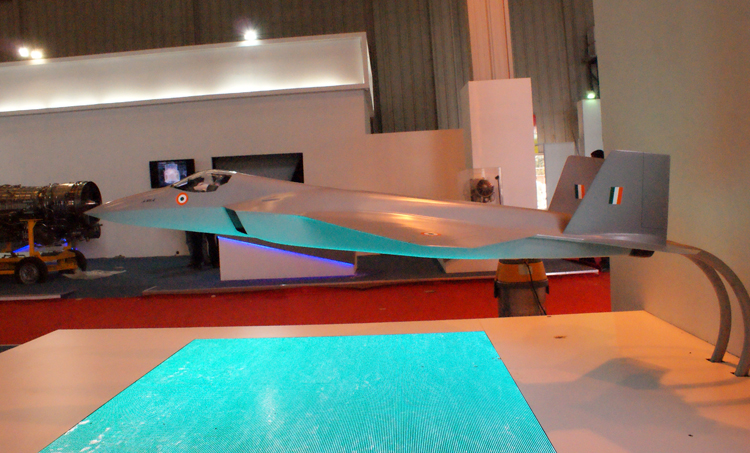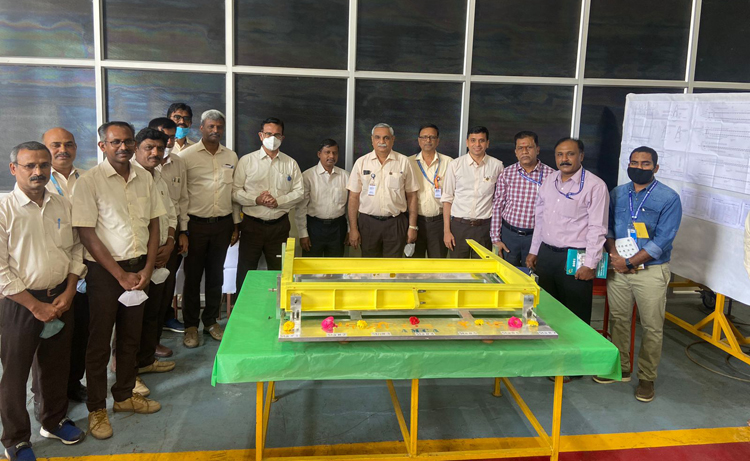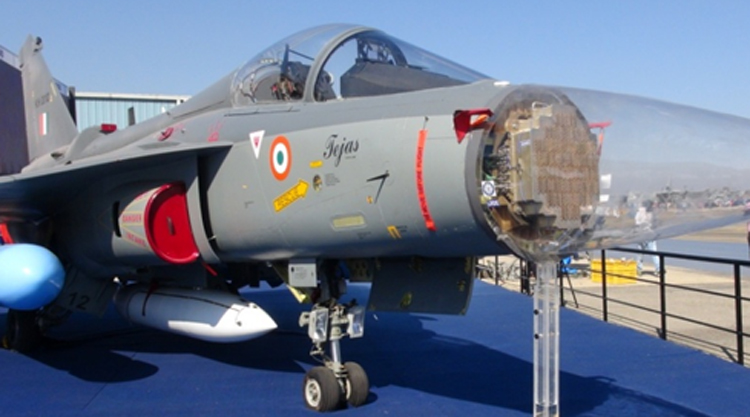INDIAN ARMED FORCES CHIEFS ON OUR RELENTLESS AND FOCUSED PUBLISHING EFFORTS

The insightful articles, inspiring narrations and analytical perspectives presented by the Editorial Team, establish an alluring connect with the reader. My compliments and best wishes to SP Guide Publications.

"Over the past 60 years, the growth of SP Guide Publications has mirrored the rising stature of Indian Navy. Its well-researched and informative magazines on Defence and Aerospace sector have served to shape an educated opinion of our military personnel, policy makers and the public alike. I wish SP's Publication team continued success, fair winds and following seas in all future endeavour!"

Since, its inception in 1964, SP Guide Publications has consistently demonstrated commitment to high-quality journalism in the aerospace and defence sectors, earning a well-deserved reputation as Asia's largest media house in this domain. I wish SP Guide Publications continued success in its pursuit of excellence.
- Operation Sindoor: Resolute yet Restrained
- India’s Operation Sindoor Sends a Clear Message to Terror and the World – ‘ZERO TOLERANCE’
- Japan and India set forth a defence cooperation consultancy framework, talks on tank and jet engines
- Terrorist Attack in Pahalgam in Kashmir: Unfolding a long surgical war against PAK
- Lt General Pratik Sharma takes over Command of Indian Army's Northern Command
AMCA Development Begins
The advanced stealth aircraft will be a multirole fighter capable of carrying out air superiority, ground strike, suppression of enemy air defences and electronic warfare missions. The IAF is planning for two squadron of AMCA Mark 1 and five squadron of Mark 2 variant.
 |
The Author is Former Director General of Information Systems and A Special Forces Veteran, Indian Army |

India’s Advanced Medium Combat Aircraft (AMCA) programme has entered a crucial phase with the commencement of its manufacturing by the state-owned Hindustan Aeronautics Limited (HAL) in association with the Aeronautical Development Agency (ADA) of the Defence Research and Development Association (DRDO). The AMCA plan envisages equipping the Indian Air Force (IAF) and Indian Navy (IN) with a 5.5 Generation twin-engine multirole stealth fighter. The development cost is estimated to be around 15,000 crore.
The AMCA programme, earlier known as Medium Combat Aircraft (MCA) programme, was initiated to develop a twin engine fighter which incorporates stealth features to replace the main strike fighters of IAF viz Mirage 2000 and SEPECAT Jaguar. In 2010, the MCA programme was rechristened as Advanced Medium Combat Aircraft (AMCA) programme and a detailed feasibility study was launched by the ADA. Although MCA was envisioned as a 15-tonne class fighter, the IAF's Air Staff requirements (ASR) for the AMCA, issued in April 2010 placed the now rechristened aircraft in the 25-tonne category. In October 2010, the government allocated 100 crore to prepare feasibility studies to be completed in 18 months. In 2013, a review committee was formed, which on the feasibility study report recommended initiating the next phase of the programme.

The Project Definition and Preliminary Design phase of AMCA began in 2013. From November 2013 to December 2014, nine configurations of AMCA, starting from 3B-01 to 3B-09, were studied using computer-aided design (CAD), low speed - high speed wind tunnel testing and radar cross section (RCS) testing. Eventually by the end of 2014, configuration 3B-09 was chosen. In 2015, basic design configuration of AMCA was finalised and a detailed AMCA programme report was submitted to the IAF, which after review gave concurrence to the programme in 2016. The Project definition phase was completed by 2017. On April 4, 2018, then Defence Minister Nirmala Sitharaman told Lok Sabha that the feasibility study for the AMCA programme had been completed and the programme would be completed in two phases viz, technology demonstration phase and full scale engineering development phase.
The design and development of the AMCA is being carried out by HAL and ADA but private defence firms are also to be roped in to manufacture the combat jet
Presently, the design and development of the AMCA is being carried out by HAL and ADA but private defence firms are also to be roped in to manufacture the combat jet. The advanced stealth aircraft will be a multirole fighter capable of carrying out air superiority, ground strike, suppression of enemy air defences and electronic warfare missions. While the first two squadrons of the AMCA MK-1 configuration will be powered by an imported engine, another five squadrons with advanced features (Mark 2) will use Made-in-India 125-kilonewton engines along with 6th Generation technologies. The new engine for the advanced fighter will be jointly developed by the DRDO and the French firm Safran.
Presently, the ADA is in process of manufacturing MK-2 version of Light Combat Aircraft (LCA) TEJAS along with HAL, as well as the AMCA and the Twin Engine Deck Based Fighter (TEDBF) for the Indian Navy. Addressing the media, Girish S. Deodhare, Director General of ADA stated, “The configuration has been frozen, Preliminary Service Quality Requirements (PSQR) are finalised and the preliminary design review is complete. The Critical Design Review (CDR) is expected later this year with the rollout planned in 2024 and the first flight planned in 2025.”
AMCA will be a single-seat, twin-engine, stealth all-weather swing-role fighter aircraft. AMCA Mark 1 will come equipped with fifth generation technologies and Mark 2 will have the incremental sixth generation technology upgrades.
In addition to the stealth features, the advanced multirole AMCA will have three-dimensional thrust vectoring, Made-in-India Uttam active electronically scanned array (AESA) radar, and internal weapons bay to bolster the stealth capabilities of the aircraft.The AMCA can clock a maximum speed of over 2,600 kilometres per hour (Mach 2.15), along with the combat range of 1,620 km. The fighter will be equipped with 23mm cannon and will have 14 hardpoints in non-stealth version to carry armaments weighing 6,500 kgs.

It had been reported in media earlier that the AMCA will be a single-seat, twin-engine, stealth all-weather swing-role fighter aircraft. AMCA Mark 1 will come equipped with fifth generation technologies and Mark 2 will have the incremental sixth generation technology upgrades. The AMCA is intended to perform a multitude of missions including air superiority, ground strike, suppression of enemy air defences (SEAD) and electronic warfare (EW). The AMCA design is optimised for low radar cross section and super-cruise capability. The first flight is expected to be by 2025-26 and serial production may begin by 2028-2030.
On March 9, 2022, the commencement of the manufacturing activities of AMCA was announced. The AMCA will bolster India’s air arsenal by enhancing air superiority.
In an interview to The Financial Express on October 22, 2021, Chief of Air Staff, Air Chief Marshal Vivek Ram Chaudhari confirmed that IAF is looking forward to the AMCA aiming at sixth generation technologies. The IAF is planning for two squadron of Mark 1 and five squadron of Mark 2 variant. There is also plan for a light combat aircraft variant of AMCA in the future. On March 9, 2022, the commencement of the manufacturing activities of AMCA was announced. The AMCA will bolster India’s air arsenal by enhancing air superiority. Further, the naval version of aircraft will become the primary combat jet fighter operating from the Indian Navy’s aircraft carriers.





